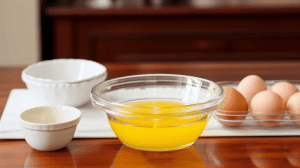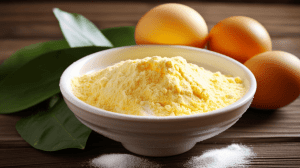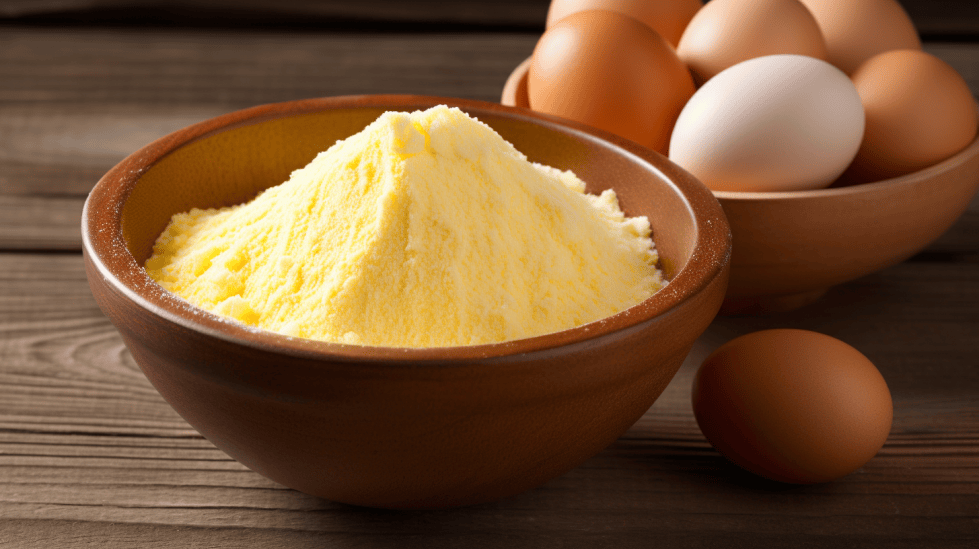How to Dehydrate Eggs
Dehydrating eggs is an excellent method to preserve them for long-term storage, especially if you have a surplus of eggs or need a lightweight, nonperishable food source for camping or hiking trips. The process involves removing the moisture content from the eggs, thus increasing their shelf life and making them less prone to spoilage. This article will guide you through the necessary steps to dehydrate eggs safely and efficiently.
Before you begin dehydrating eggs, it is essential to understand the process, gather your ingredients, and invest in the appropriate tools for egg dehydration. You can dehydrate whole eggs or separate the yolks and whites, depending on your preference and future usage. There are various ways to dehydrate eggs, including the cook-dry method and the wet-dry method, which offer different results in terms of texture and rehydration time.
Key Takeaways
- Dehydrating eggs preserves them for long-term storage and makes them lightweight for travel
- It’s crucial to understand the process, gather ingredients, and have the right tools for egg dehydration
- There are different methods to dehydrate eggs, depending on your needs and preferred results.
Understanding Egg Dehydration
Dehydrating eggs is an effective method of food preservation, which allows us to store and use eggs for an extended period. I’ve learned that dehydrating eggs not only saves space, but also ensures that the nutritional value of the eggs is retained. In this section, I will discuss the process of dehydrating eggs, sharing the steps and techniques to successfully dehydrate eggs at home.
Firstly, I would recommend using a food dehydrator for the most effective results. Dehydrating eggs involves removing the moisture from the eggs so that they can be stored and used at a later time. To start, I usually blend the eggs in a blender, aiming for a smooth, even consistency. For example, I once dehydrated 18 eggs and used 3 fruit leather trays for my dehydrator, placing 6 blended eggs on each tray. The blending step is necessary to ensure an even distribution of the eggs on the trays and allows for even dehydration.
Once the eggs are blended, I pour the mixture onto the dehydrator trays. It’s essential to set the dehydrator to a low temperature, around 135°F (57°C), to ensure that the eggs are dehydrated properly without compromising their nutritional value. The dehydration process can take approximately 6 to 8 hours, depending on the dehydrator and thickness of the egg mixture on the trays. When the eggs are completely dry and crumbly, I carefully remove the dried egg sheet from the tray and allow it to cool down.
After cooling, the dehydrated eggs can be further processed into egg powder. This powder can be stored in an airtight container and used in various recipes or even rehydrated to create scrambled eggs or omelets. It is important to note that commercially, dehydrated eggs are prepared by spray drying, a process in which pasteurized, liquefied eggs are dispersed through a nozzle into a heated tank environment. This method evaporates the water and leaves behind powdered egg solids.
In conclusion, dehydrating eggs at home is a practical and beneficial method of food preservation. With the right equipment and techniques, anyone can dehydrate eggs for long-term storage purposes. Give it a try and take advantage of the versatility and convenience of dehydrated eggs.
Procuring Your Ingredients
Selection of Fresh Eggs

When I dehydrate eggs, it’s essential to start with fresh, high-quality eggs. Large, whole eggs are the best choice for this process, as they yield a good amount of dehydrated product. I prefer to purchase my eggs from a local farmer or market, as this ensures their freshness and supports local agriculture.
When selecting eggs for dehydration, I make sure the shell is clean, free from cracks, and has a consistent shape. The quality of the eggs I use directly affects the final dehydrated product, so it’s crucial to choose carefully.
Making Your Own Eggs
If I have my own chickens, this process becomes even more rewarding. Raising chickens allows me to control the quality of the eggs I use for dehydration. Furthermore, having my own egg-laying hens gives me a steady supply of fresh eggs to work with.
In order to have a consistent supply of eggs, it’s essential to take good care of the chickens. This includes providing them with a balanced diet, access to clean water, and proper living conditions. Regular health checks and routine maintenance of their living space are also crucial to ensure the wellbeing of the birds.
By raising my own chickens, I can obtain fresh, large eggs for dehydration while also gaining the benefits of homegrown, sustainable food source. In the end, choosing to either source fresh eggs from local markets or raising my own chickens, the goal is the same: obtaining high-quality ingredients to produce successfully dehydrated eggs.
Tools Needed for Dehydration
Choosing a Food Processor
When dehydrating eggs, using a food processor or blender is essential to achieve a consistent texture. Blending the eggs thoroughly ensures even dehydration. I personally prefer a high-powered blender, but a food processor works just as well.
Choosing a Food Dehydrator
Selecting the right food dehydrator plays a crucial role in the dehydration process. Look for dehydrators with adjustable temperature settings and an efficient airflow system. My preference is for models that come with fruit leather trays, as they make spreading the egg mixture easier.
Storing in Airtight Container
Once the eggs are dehydrated, I recommend placing them in airtight containers. This step is vital in preserving the quality and shelf life of the dehydrated eggs. Glass jars with tight-fitting lids or high-quality plastic containers work well for this purpose.
Utilizing Mylar Bags
In addition to airtight containers, Mylar bags offer an excellent option for long-term storage. I prefer lining the Mylar bags with a food-grade desiccant to absorb any residual moisture. Sealing the bags with an impulse sealer locks in freshness and prolongs shelf life.
The Use of Vacuum Seal
For the best results in preserving dehydrated eggs, vacuum sealing is highly recommended. I find that vacuum sealing removes air from the storage bags, reducing the risk of spoilage and extending storage life. A good quality vacuum sealer is an investment that pays off for those who frequently dehydrate and store food.
Preparation Steps for Dehydrating Eggs

Breaking the Eggs
The first step in dehydrating eggs is to break the eggs. I carefully crack each egg, separating the egg yolks from the egg whites. It is important to ensure that there are no eggshell fragments mixed into the yolks and whites.
Blending Whole and Yolk Eggs
Next, I blend the egg yolks and egg whites together. I use a blender or a whisk to combine the yolks and whites thoroughly, often using a pulse setting for a few seconds until I achieve a smooth and even egg mixture. Blending the eggs properly is crucial for even dehydration and easier rehydration later on.
Layering the Egg Mixture
Once the eggs are blended, I pour the egg mixture onto a lined dehydrator tray. This can be done using fruit leather sheets, parchment paper, or a silicone baking mat. I spread the mixture thinly and evenly to ensure it dries consistently and does not stick to the tray during the dehydration process. It’s important to keep an eye on the thickness of the egg mixture layer, as this affects the drying time and the quality of the final dehydrated eggs.
Dehydration Process
When it comes to dehydrating eggs, there are a couple of methods that can be employed to achieve the desired result. In this section, we’ll discuss the drying time, the wet-dry method, and the cook-dry method.
Understanding the Drying Time
The drying time for eggs depends on several factors, including the method used, the size of the eggs, and your dehydrator’s settings. Generally, it takes around 5-6 hours at a low temperature, such as 135°F (57°C) to dehydrate eggs. However, it’s essential to check the eggs periodically and adjust the drying time as needed.
The Wet-Dry Method
The wet-dry method involves blending whole eggs until they’re slightly beaten, just enough to mix the yolks and whites together source. First, break as many eggs as you’d like into a blender container. You can work with seven to eight eggs at once. Blend them slightly, pulsing no more than four times, to avoid overmixing.
Next, pour the blended egg mixture onto a dehydrator tray lined with a non-stick sheet or parchment paper. Spread the mixture evenly and place it into the dehydrator.
Set your dehydrator to a low temperature, around 135°F (57°C), and let it run for approximately 5-6 hours, or until the eggs are brittle and easy to crumble. The duration may vary depending on the dehydrator model and ambient conditions. Once done, allow the dehydrated egg pieces to cool down before storing or using them.
The Cook-Dry Method
The cook-dry method requires the eggs to be cooked, most commonly in the form of scrambled eggs, without adding any additional liquid, such as milk or water source. To begin, lightly scramble the eggs in a non-stick pan until they are fully cooked. Make sure to avoid overcooking or browning them.
Next, evenly spread the cooked eggs on a dehydrator tray lined with a mesh liner to prevent small pieces from falling through the slits in the machine trays. Set the dehydrator to 145°F (62°C) and let it run for about four hours or until the eggs become brittle.
Once the eggs have reached the desired consistency, allow them to cool down before grinding them into a fine powder using a coffee grinder, pestle, or food processor source. This method helps avoid the slightly grainy texture that pre-cooked dried eggs can sometimes have.
Remember, it’s essential to keep a close eye on the drying time and use a suitable temperature to ensure the best results when dehydrating eggs.
Post Dehydration Process

After dehydrating eggs, it’s important to properly process and store them. In this section, I will guide you through two crucial steps: grinding the dehydrated eggs into a fine powder and choosing effective storage methods.
Grinding into Fine Powder
Once the eggs are completely dehydrated and brittle, it’s time to grind them into a fine powder. This makes it easier to reconstitute the eggs later on and ensures that they mix well in recipes. To do this, you can use a blender, food processor, or even a coffee grinder. Make sure to pulse the device in short bursts and check the consistency periodically. You want the powder to be as fine as possible without over-processing it.
Effective Storage Methods
Proper storage is key to preserving the longevity and quality of your dehydrated egg powder. Here are some methods I recommend:
-
Glass jars: Using glass jars, such as mason jars or small jars with airtight lids, is a great option for storing dehydrated egg powder. Make sure the jars are clean and completely dry before adding the powder.
-
Vacuum-sealed bags: Vacuum-sealed bags work well for long-term storage as they remove air, which can cause spoilage. You can use a vacuum sealer or manually squeeze the air out of a zipper storage bag before sealing.
Always remember to store your dehydrated egg powder in a cool, dry place away from sunlight. A dark pantry or cabinet is ideal. Proper storage will help maintain the nutritional value, flavor, and shelf life of your dehydrated eggs.
Rehydrating and Using Dehydrated Eggs
Rehydrating with Cold Water

I have found that the easiest way to rehydrate dehydrated eggs is with cold water. To do this, I use a simple formula: 1 tablespoon of egg powder mixed with 2 tablespoons of water is equivalent to 1 whole fresh egg. After combining the egg powder and water, I let the mixture sit for about five minutes. During this time, the powder absorbs the water and turns back into its original, liquid state.
Using in Various Recipes
Once the dehydrated eggs are rehydrated, I find they can be used in a variety of ways. In my experience, some of the most common uses for rehydrated eggs are scrambled eggs and French toast.
Scrambled Eggs: To make scrambled eggs, I mix the rehydrated egg mixture in a bowl and season it with salt and pepper or any other preferred seasonings. Then, I heat a non-stick skillet over medium heat, add a little butter or oil, and cook the egg mixture until it is fully cooked and slightly golden on the edges. The result is a delicious and satisfying breakfast dish.
French Toast: Another favorite use of mine for rehydrated eggs is in making French toast. I simply mix the rehydrated egg mixture with some milk, cinnamon, and vanilla extract in a shallow dish. Then, I dip slices of bread into the egg mixture, making sure to coat both sides evenly. Once the bread is coated, I cook the slices in a buttered non-stick skillet until they are golden brown and slightly crispy on the outside.
In conclusion, rehydrating and using dehydrated eggs can be a simple and efficient process. By rehydrating them with cold water and incorporating them into various recipes, I can enjoy the versatility and convenience of dehydrated eggs in my daily cooking.
Maintaining Nutritional Value
When dehydrating eggs, maintaining their nutritional value is essential. As a high-protein, potassium, and vitamin A rich food, eggs are an excellent addition to a balanced diet. It’s crucial to use proper techniques to preserve these nutrients during dehydration.
In my experience, cooking the eggs before dehydrating is generally recommended, as it eliminates the risk of potential bacterial growth. I prefer scrambling the eggs without adding any milk or water and spreading them in a thin layer on a dehydrator tray lined with a mesh sheet or parchment paper. This method helps ensure that the dehydrated eggs remain safe to consume, while also retaining their nutritional content.
Another aspect to consider is the dehydrator temperature. I found that setting the dehydrator to a low temperature, around 135°F (57°C), yields the best results when it comes to preserving nutrients. It is essential to monitor the time and temperature closely, as over-dehydration can adversely affect nutrient retention. You can follow a guideline of approximately 6 to 8 hours or until the eggs are completely dry and crumbly as mentioned here.
Finally, storage plays a significant role in maintaining the nutritional value of dehydrated eggs. After blending the dried eggs into a fine powder, I store them in an airtight container at room temperature, away from sunlight or moisture. This method helps prolong the shelf life and preserve the nutrient-rich qualities of the dehydrated eggs.
By paying attention to cooking, dehydrator settings, and storage, I can optimize the nutritional value of the dehydrated eggs and enjoy their wholesome benefits for an extended period.
Alternative Dehydration Methods
Using a Freeze Dryer

One alternative method of dehydrating eggs is by using a freeze dryer. A freeze dryer works by rapidly freezing your food, then employing a vacuum to gradually remove the moisture. Freeze-drying maintains the consistency and nutritional value of the eggs. To use a freeze dryer for eggs, you will first need to mix the eggs well and then pour the mixture onto the freeze dryer trays. After the freeze-drying process, store the dehydrated eggs in an airtight container to maintain their shelf life.
Creating Powdered Eggs with Different Methods
Another way to dehydrate eggs is to create powdered eggs. This can be done using various methods, such as the cook-dry method and the wet-dry method.
Cook-dry Method
The cook-dry method involves scrambling the eggs before dehydrating them. First, scramble the eggs in a frying pan over medium-low heat, using minimal oil since it can affect the dehydration process. This may take about 15 to 20 minutes due to the large volume of eggs and low heat. Once cooked, pour the scrambled eggs onto a dehydrator tray or sheet. Dehydrate until they become crispy, then break them into smaller pieces and blend into a powder.
Wet-dry Method
For the wet-dry method, start by beating the eggs well. Add one teaspoon of salt for every four eggs to help preserve them during the dehydration process. Next, pour the egg mixture onto a lined dehydrator tray, spreading it evenly and thinly. Use fruit leather sheets if available, or try parchment paper. Dehydrate the eggs until they become brittle and crunchy. Finally, blend the dehydrated egg pieces into a fine powder for storage and future use.
Advantages of Dehydrating Eggs
Long-Term Storage and Use
Dehydrating eggs is an excellent method for preserving them for long-term storage. By removing moisture from the eggs, their shelf life can be greatly extended. I have found that dehydrated eggs can be stored in an airtight container or vacuum-sealed bag, occupying less space compared to their fresh counterparts. This makes them convenient and practical, especially for those with limited storage space.
When it’s time to use the dehydrated eggs, I simply rehydrate them by adding water. I have successfully used rehydrated eggs in various recipes such as scrambled eggs, omelets, and baked goods, making them a versatile addition to my food storage.
Saves Extra Cost
By dehydrating eggs at home, I can save money compared to purchasing commercially dehydrated eggs. When I see eggs on sale at the grocery store, I take advantage of the deal and buy extra eggs to dehydrate. Not only is the process easy, but it also costs less to dehydrate eggs at home as opposed to buying pre-packaged alternatives.
Reliable Source of Protein
Eggs are a valuable source of protein, vitamins, and minerals. By maintaining a stock of dehydrated eggs in my pantry, I ensure that I always have a reliable source of protein available. This can be particularly valuable during times when fresh eggs are scarce or expensive, allowing me to maintain a balanced diet and support my nutritional needs.
In conclusion, dehydrating eggs offers numerous advantages, making them a valuable addition to any home food storage strategy.
Conclusion
I’ve found that dehydrating eggs at home is not only possible but also a practical way to preserve them for long-term storage. The process is quite simple and only requires a few steps. First, blend the eggs until they are completely mixed. As I found in Stocking My Pantry, for every 6 eggs, around 1.25 cups of beaten eggs were obtained.
Next, spread the beaten eggs onto dehydrator trays. It’s advisable to use low temperature, around 135°F (57°C), as mentioned by An Off Grid Life. The dehydrator should run for approximately 6 to 8 hours or until the eggs are completely dry and crumbly. Once done, allow the dried egg sheet to cool down before storing it.
I found that dehydrated eggs are a cost-effective option, especially if you buy eggs in bulk or have your own chickens. Making dehydrated eggs at home can save me money compared to buying pre-packaged dehydrated eggs. Dehydrated eggs are a versatile and convenient food product for various recipes, and reconstitution is quite simple.
By preserving my eggs using dehydration techniques, I can extend their shelf life significantly without losing much of their nutritional value. It’s worth considering as a reliable method for anyone looking to have a long-lasting egg supply at home.
Frequently Asked Questions
What is the best method to dehydrate scrambled eggs?
When it comes to dehydrating scrambled eggs, I recommend using a dehydrator with a temperature setting of about 135°F (57°C). To prepare the eggs, cook them just enough to ensure they are no longer runny but still a bit wet, as overcooking can lead to crumbly and difficult-to-dehydrate eggs. Lay the scrambled eggs evenly across the dehydrator tray and let them dry for 6-8 hours, depending on the dehydrator’s efficiency. Always remember to ensure the eggs are fully dry before storage.
How can I safely dehydrate raw eggs for long term storage?
Dehydrating raw eggs requires a few extra steps to ensure their safety and quality. First, I recommend pasteurizing the eggs by heating them in their shells in a water bath at 140°F (60°C) for 3-5 minutes. After this step, blend the eggs until smooth and pour them onto a dehydrator tray lined with a non-stick sheet. Set the dehydrator temperature to about 135°F (57°C) and let it run for 6-8 hours until the eggs are completely dry and brittle. Here’s a complete guide about dehydrating raw eggs.
What are some good dehydrated egg recipes?
Dehydrated eggs are quite versatile and can be used in various recipes. Some of my favorites include rehydrated scrambled eggs, veggie-loaded omelets, breakfast burritos, and even quiches. In each case, simply reconstitute the dehydrated eggs by mixing them with water or milk before incorporating them into the dish. Adjust the ratios to achieve the desired consistency and taste.
How can I properly use dehydrated eggs in baking?
Using dehydrated eggs in baking is relatively simple. In most recipes, you can substitute dehydrated eggs for fresh ones at a 1:1 ratio. Before using them, mix the dehydrated eggs with water to rehydrate them, then add them to your recipe as you would fresh eggs. Just remember that rehydrated eggs might lack a bit of volume compared to fresh ones, so you might need to adjust the liquid content in your recipe to ensure the proper consistency.
What’s the shelf life of dehydrated eggs?
Dehydrated eggs, when stored properly, can have a shelf life of up to a year. To make them last as long as possible, ensure the eggs are completely dry before storing them in an airtight container. Keep the container in a cool, dark, and dry place to maximize freshness and prevent spoilage.
How can I purchase dehydrated eggs for camping?
Dehydrated eggs can be purchased from various outdoor, sports, and survival stores, as well as online retailers such as Amazon. Look for dehydrated or freeze-dried eggs specifically designed for camping and backpacking purposes to ensure they are lightweight, compact, and easy to rehydrate on the go.








